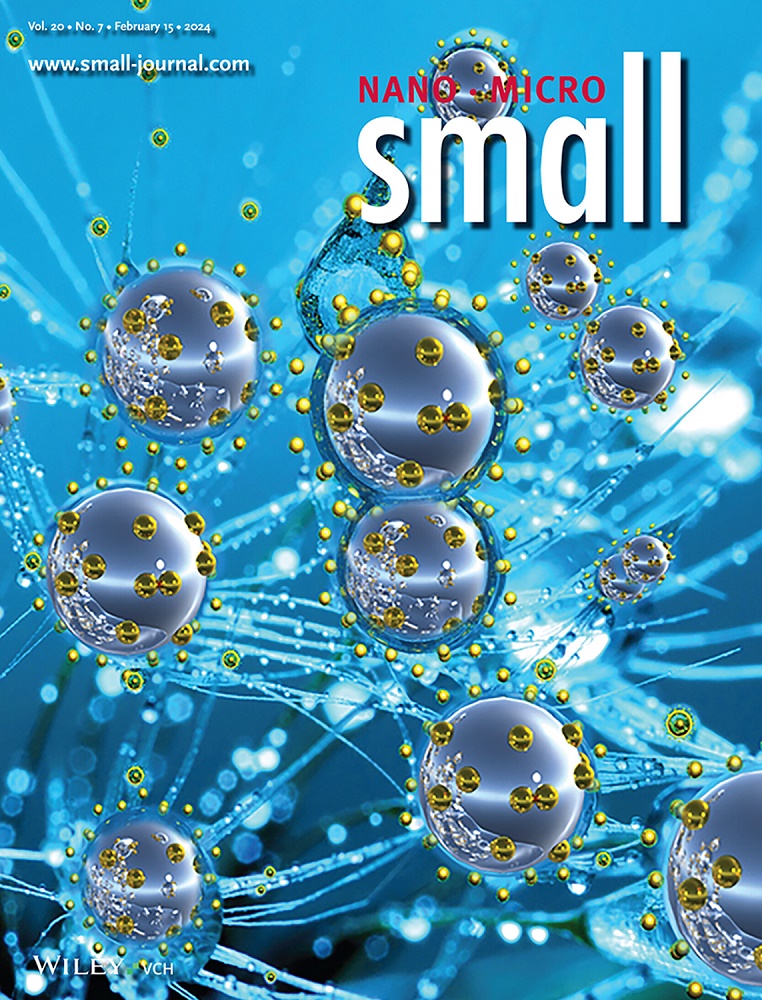反应性纳米粒子组成的双层:Pt/Al纳米油生产的另一种途径。
IF 12.1
2区 材料科学
Q1 CHEMISTRY, MULTIDISCIPLINARY
引用次数: 0
摘要
气相电沉积是一种基于纳米粒子的制备Pt/Al双金属堆(自传播反应体系)的方法。这种方法可以实现火花放电合成的亚10nm Pt和Al纳米颗粒在图案化衬底上的局部自组装。通过调节火花功率和载气流速来精确控制铂膜的形态(孔隙度)。多孔的Pt层导致扩散的Pt/Al界面,密集的Pt层使其变得更加锐利。在点火过程中,记录了自持续高温合金形成反应的波阵面。双金属界面强烈影响Pt/Al反应动力学,界面越锋利反应速度快3个数量级。过多的气隙和预混区阻碍了多孔形态和扩散界面的形成,中间孔隙的速度为0.012 m s-1,致密形态具有尖锐的界面,最小的气穴速度可达6 m s-1。选择区域(电子)衍射(SAED)和x射线衍射(XRD)研究表明Al2Pt和Al3Pt2是PtAl中间相中的主要合金相。此外,XRD还证实了Pt-Al合金的晶面生长与温度有关。这些结果证明了膜形态对反应动力学的关键影响,并强调了可调谐Pt/Al双金属体系在未来能源相关应用中的潜力。本文章由计算机程序翻译,如有差异,请以英文原文为准。
Reactive Nanoparticle Composed Bilayers: An Alternate Route Toward the Production of Pt/Al Nanofoils.
Gas-phase electrodeposition is presented as a nanoparticle-based route toward the fabrication of Pt/Al bimetallic stacks (self-propagating reactive system). This approach enables localized self-assembly of spark discharge-synthesized sub-10-nm Pt and Al nanoparticles on patterned substrates. Precise control over Pt film morphology (porosity) through modulation of spark power and carrier gas flow rate is demonstrated. Porous Pt layers lead to diffused Pt/Al interfaces, which become sharper for densely packed Pt layers. On ignition, the self-sustained high-temperature alloy formation reaction wavefronts are recorded. The bimetallic interface strongly influences the Pt/Al reaction kinetics, with three orders of magnitude faster reaction speeds for sharper interfaces. Porous morphologies and hence diffused interfaces are hindered by excessive air gaps and premixed regions, intermediate porosities achieved speeds of 0.012 m s-1, and dense morphologies have sharp interfaces with minimal air pockets reaching speeds up to 6 m s-1. Selected area (electron) diffraction (SAED) and X-Ray diffraction (XRD) studies reveal Al2Pt and Al3Pt2 as the dominant alloy phases amongst other intermediate PtAl phases. Furthermore, XRD demonstrates temperature-dependent facet growth of Pt-Al alloys. These results prove the critical influence of film morphology on reaction kinetics and emphasize the potential of tuneable Pt/Al bimetallic systems for future energy-related applications.
求助全文
通过发布文献求助,成功后即可免费获取论文全文。
去求助
来源期刊

Small
工程技术-材料科学:综合
CiteScore
17.70
自引率
3.80%
发文量
1830
审稿时长
2.1 months
期刊介绍:
Small serves as an exceptional platform for both experimental and theoretical studies in fundamental and applied interdisciplinary research at the nano- and microscale. The journal offers a compelling mix of peer-reviewed Research Articles, Reviews, Perspectives, and Comments.
With a remarkable 2022 Journal Impact Factor of 13.3 (Journal Citation Reports from Clarivate Analytics, 2023), Small remains among the top multidisciplinary journals, covering a wide range of topics at the interface of materials science, chemistry, physics, engineering, medicine, and biology.
Small's readership includes biochemists, biologists, biomedical scientists, chemists, engineers, information technologists, materials scientists, physicists, and theoreticians alike.
 求助内容:
求助内容: 应助结果提醒方式:
应助结果提醒方式:


